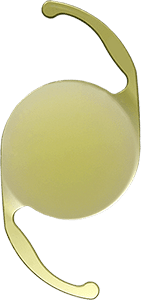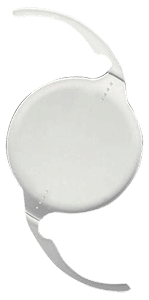

A cataract is a clouding of the natural lens in the eye that affects light passing through and thus your vision. Most cataracts are related to aging. Cataracts are very common in older people. The average age of onset cataract is 67 years old in the U.S. By age 80, more than half of all Americans have had cataract surgery. A cataract can occur in either or both eyes. It cannot spread from one eye to the other.
To treat your cataract, the cloudy natural lens must be removed and replaced with a new, clear artificial lens. The removing of cataract is accomplished through a process involving ultrasound energy called phacoemulsification, or phaco. In phaco surgery, a small ultrasonic probe is inserted into the eye. This probe breaks (emulsifies) the cloudy lens into tiny pieces and gently washed out. The new man made lens is then inserted and it opens up like a flower when inside the eye. No stitches are used and the incision is self-healing.
Cataract surgery has existed in this world for over a century, but it is the recent innovations in technology that have transformed this into a very safe and effective surgery. It’s great to know that the success rate for cataract surgery is high when you are going into this situation.
Today, advanced artificial intraocular lenses have allowed patients to recover more youthful eyesight. Instead of dealing with glasses after surgery, some patients may have the choice to upgrade to a new premium type of intraocular lens (IOL) that will enable vision at multiple distances. In addition to the new lens implants available, less invasive surgery techniques have come to fruition to enable much faster healing.
Despite the effectiveness of cataract surgery the preparation process may take weeks and various decisions will need to be made. Cataract surgery is one of the most commonly performed medical procedures, with over 3 million surgeries performed each year.

Once you have decided to have cataract surgery you will have a number of important decisions to make. The first item on the agenda is to select a skilled cataract surgeon. If you are seeking a cataract surgeon in Port Orange or Ormond Beach, our doctors at Premier Eye Clinic would be more than happy to be your surgeon of choice.
In addition to our experience and reputation, we are the home of the most up-to-date and modern surgery techniques and equipment available to our patients. Once you have selected a cataract surgeon it is time to understand what lens implant option will be the best. It’s important to discuss your options with a qualified ophthalmologist. Your options will include monofocal lenses, multifocal IOLs, extended-depth-of-focus IOLs (EDOF), or accommodating lens implants.

Before your cataract surgery, your eye must be properly cleaned and dilated. A topical anesthetic is used before the small incision is made. An ultrasonic device will be inserted into the small incision to pulverize the hard yellow proteins that form the cataract and remove them from the eye.
A folded intraocular lens will be inserted through the original incision. This lens will replace your natural lens and stay in place inside your eye, providing you with clear vision after the procedure. You will not be able to feel or sense the implanted lens in any way. The small incision will then self-seal itself without the need for stitches.

It is important that you discuss your vision expectations with your eye surgeon to determine the right lens implant for you. The lens will be inserted into your eye after your natural lens has been removed. Learn more about the premium lens implants offered at Premier Eye Clinic.
Most patients will notice improved vision with their new lens within the first few hours to days. It is important that you follow the postoperative instructions provided by your cataract surgeon for the safety of your eye and to achieve the best vision outcome. For example, it is important that you refrain from strenuous physical activity and from rubbing your eye, or contaminating your eye during the first few weeks after the surgery.
The experienced team members at Premier Eye Clinic are available to answer any questions you may have regarding your cataract surgery.
For most cataract patients, life without glasses or contact lenses is something they either experienced before or they have dreamed about. But, today new surgical technology and custom lens implants are turning those dreams into reality.
Premium lens implants that correct astigmatism and presbyopia (the need for reading glasses with aging) are available to reduce your dependence on glasses or contact lenses. Traditional monofocal lens implants are also more precise and may be individualized to achieve your targeted glasses-free vision after cataract surgery.
Following a thorough evaluation, we will give you the options of treatment that are appropriate for your eye conditions and will help you to select the lens implant that is the most suitable for your visual needs.





Schedule an appointment at Premier Eye Clinic in Port Orange, FL, today!